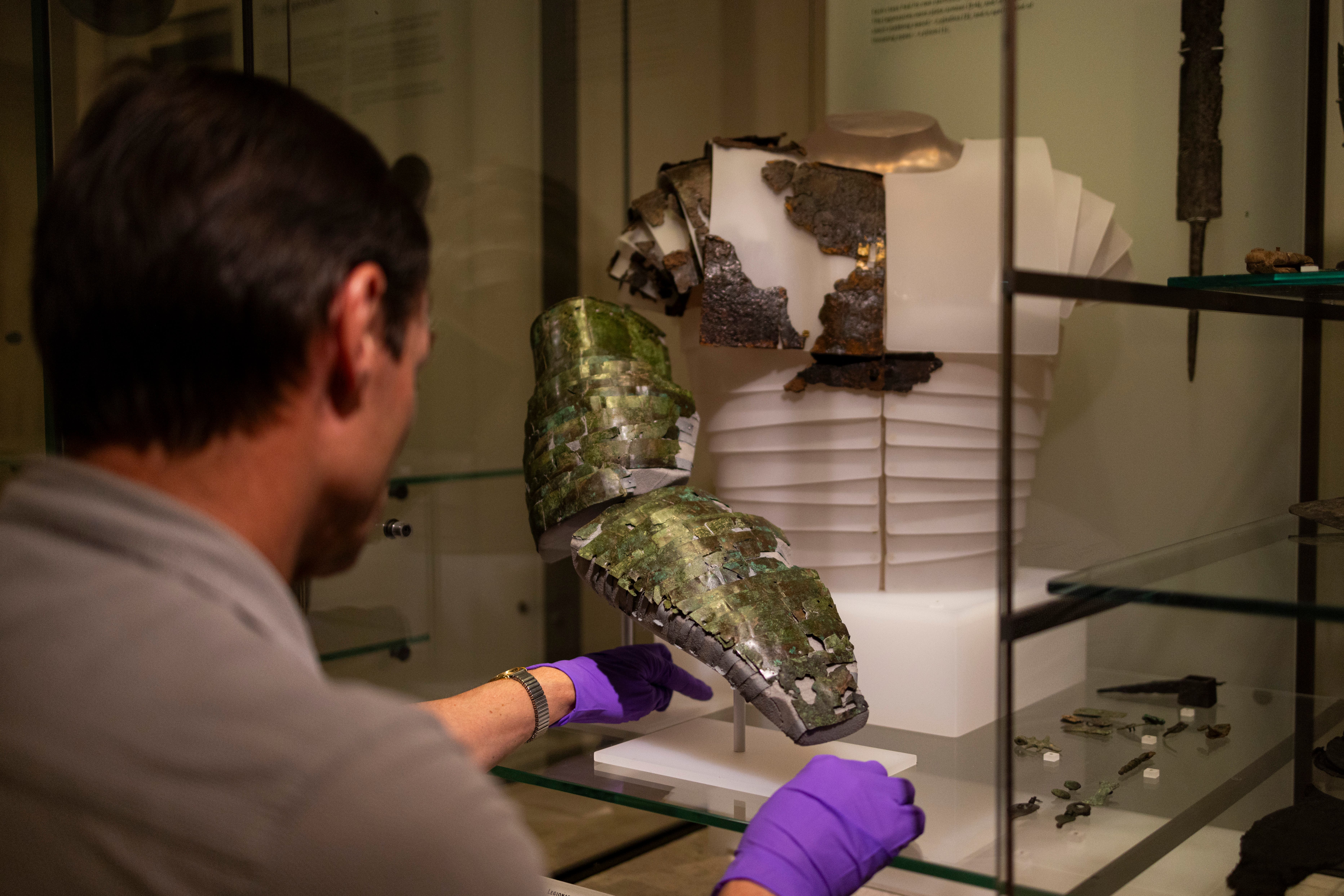‘Rare and special’ piece of Roman armour on display in Scotland for first time
The armour was discovered in over 100 pieces at the site of the Trimontium fort near Melrose in 1906.

Your support helps us to tell the story
From reproductive rights to climate change to Big Tech, The Independent is on the ground when the story is developing. Whether it's investigating the financials of Elon Musk's pro-Trump PAC or producing our latest documentary, 'The A Word', which shines a light on the American women fighting for reproductive rights, we know how important it is to parse out the facts from the messaging.
At such a critical moment in US history, we need reporters on the ground. Your donation allows us to keep sending journalists to speak to both sides of the story.
The Independent is trusted by Americans across the entire political spectrum. And unlike many other quality news outlets, we choose not to lock Americans out of our reporting and analysis with paywalls. We believe quality journalism should be available to everyone, paid for by those who can afford it.
Your support makes all the difference.A “rare and special” piece of Roman armour that was recently reconstructed from dozens of fragments has gone on display in its entirety for the first time in Scotland.
The brass arm guard, which dates from the middle of the second century, is the most intact example of its kind, and one of only three known from the whole Roman empire.
It was first discovered in more than 100 pieces at the site of the Trimontium fort near Melrose in 1906, and sections of it have previously been on display at the National Museum of Scotland in Edinburgh and the Trimintium Museum.
Earlier this year, conservators in Edinburgh spent weeks rebuilding the item in its entirety preparation for its loan to the British Museum’s exhibition Legion: Life in the Roman Army, which ended in June.
The item then returned to Scotland, and on Wednesday it went on permanent display as part of the Early People Gallery at the National Museum of Scotland in Edinburgh.
Dr Fraser Hunter, principal curator of prehistoric and Roman archaeology at National Museums Scotland, said the item would have been both “a means of protection” and a “status symbol”.
This is a rare and special object, and I’m delighted that it is now on permanent display in the National Museum of Scotland for our visitors to enjoy
“This is a rare and special object, and I’m delighted that it is now on permanent display in the National Museum of Scotland for our visitors to enjoy,” he said.
“Brass armour like this would have been expensive and would have acted as both a means of protection and an eye-catching status symbol.
“The arm guard is displayed alongside a well-preserved section of iron body armour uncovered in the same building of the fort, and together they offer a tantalising glimpse into the life of a legionary in Roman Scotland.”
When it was first unearthed the arm guard was in “remarkably” good condition, with the remnants of leather straps still attached to the metal.
When worn it would have stretched down from the wearer’s shoulder and ended in a thin square of metal that would have protected their hand.
This design is thought to have been inspired by the equipment worn by gladiators fighting in the arena.
Experts initially believed the arm guard would have been body armour, and it was later thought to be a thigh guard for a cavalryman.
It is only in recent years that its true function has been understood.
National Museums Scotland is one of the leading museum groups in the UK and Europe, and it looks after collections of national and international importance.
The organisation provides loans, partnerships, research and training in Scotland and internationally.